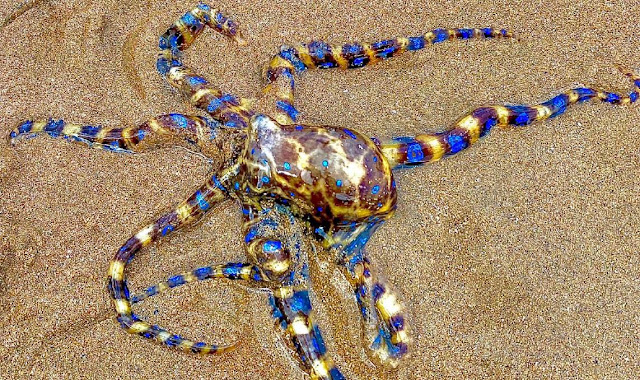Poison Vs Venom: What is the difference between poison and venom?
- Get link
- X
- Other Apps
By Ivan Miyingo Quintus
 |
| Photo by NY Post |
With a head-on straightforward approach: 'If you bite it and you die it's poison, but if it bites you and you die, that's venom,
Most venomous reptiles use their teeth to deliver their toxins. Vipers, like the Great Lakes bush viper (Atheris nitshcei) administer theirs through hollow, retractable teeth.
What's the difference between venomous and poisonous?
Why venom needs a wound
The reason venom requires a wound for application, but poison doesn't, storms down to the difference in their chemical composition.
Poison has very small chemical molecules that can easily pass and get absorbed through your skin into the body's systems. However, the molecules of venom are too big to be absorbed in this manner, so they have to be injected directly into the body.
Although possible without significant harm, drinking venom is absolutely not advisable. This is because even the smallest ulcer or cut anywhere along the digestive system would allow the venom to be absorbed, resulting in the same effect as being injected.
Deeply technically though it is possible to drink venom. The venom molecules are quite big so they can't be absorbed through tissue, and then the stomach acid destroys the proteins that make up the venom, hence making it less dangerous.
On the flip side of the coin, poison is usually used defensively or as a predator deterrent. In most cases, it is absorbed through the mouth and digestive system.
Venom can be used defensively. But it has a broader range of roles depending on the animal using it. Some harness it as a tool for hunting, whereas others use it in parasitism or in competition with others of its own species.
 |
| PHOTO I Orlando Science Center |
Double threat
Some species are both venomous and poisonous.
The spitting cobra bites its prey so it is paralyzed when the cobra eats it. But it also spits. If that lands in your eye it can cause blindness and horrible pain. That venom is now by definition a poison, because it is absorbed rather than injected through a wound.
The blue-ringed octopus makes its own venom like other squids and octopuses. But the deadly nature of this cephalopod comes from tetrodotoxin (TTX), a poison acquired from bacteria that live in various places in the body, including venom glands.
You sometimes find drowned green sea turtles that have been grazing on seagrass and have accidently eaten one of these tiny octopuses, which paralyzes them. TTX can act as either a poison if a predator eats the octopus, or as venom if injected through a bite.
The venom they naturally produce isn't that powerful, but the tetrodotoxin from the bacteria blocks the transmission of nerve impulses to muscles, and the diaphragm paralyzes, causing suffocation.
 |
| Blue-ringed Octopus |
Painful doesn't always mean fatal
Not all venoms and poisons are fatal to humans. An envenomation can just be painful, as the substances may be being used as a deterrent.
The bullet ant is regarded as having the most painful sting of all insects. The pain can last up to 24 hours, but a human victim is likely to walk away otherwise unharmed.
Bees and wasps can both provide an uncomfortable sting, but for the most part, neither is deadly - except in cases of anaphylactic shock, an extreme allergic reaction to the venom.
Similarly, some poisons will cause swelling, nausea or other unpleasant side effects if the toxins are absorbed.
 |
| The Bullet Ant |
Venom resistance
Some animals are so frequently at risk from venom and poison that they have developed a total resistance to them.
Meerkats prey mainly on insects but are also known to feast on lizards, snakes, and spiders. Because of their varied diet, they tend to develop resistance against some venomous bites and stings.
Meerkats are part of the mongoose family (Herpestidae), several members of which have evolved resistance to venom. This means they can freely hunt venomous prey with limited risk.
Almost all animals have receptors that transmit chemical messages around the body. Venom works by binding itself to these receptors, blocking vital impulse conduction pathways that allow the body to function normally, such as nerve-muscle communication.
Animals that have developed venom resistance have evolved mechanisms to stop the toxins from binding to the receptors. This results in an animal that can withstand venom with little or no side effects.
So far scientists fully understand venom resistance in only four mammals - mongooses, honey badgers, hedgehogs, and pigs - as well as several snakes.
 |
| Adult & Baby Meerkat |
The golden poison frog is one of the most toxic animals on Earth, deadly to almost all animals except one. Their skin is covered in a potent poison that prevents nerves from transmitting impulses, rendering muscles inactive.
These frogs' only predators are a single species of snake, Liophis epinephelus, which has developed a resistance to their powerful poison.
 |
| Liophis epinephelus |
But with the enormous variety of animals on the planet, there is a whole world of venom and poisons left for experts to explore, from the toxin cocktails to the animals that might be resistant to them.
 |
| Golden poison frog |
- Get link
- X
- Other Apps




Comments
Post a Comment